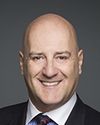I think that's the perfect question.
We've talked about complementary tools, whether it be an X-ray, an ion scan, or a detector dog. The officers use a multiplicity of indicators to make sure they move from non-intrusive, the least intrusive ability to examine a person or their goods, before moving to much more intrusive, let's say a pocket search or a personal search, as you just mentioned.
We're also quite cognizant of the traveller and their ability to facilitate their travel. We don't immediately try to do examinations where they're not needed. The officer does use other tools, other information at their disposal, whether it be documentary analysis, the travel patterns, or any other information within one of our databases.
Based on this consolidation of information, the indicator from an ion scan, travel patterns, advance information, is used together to do the appropriate examination for that instance.




